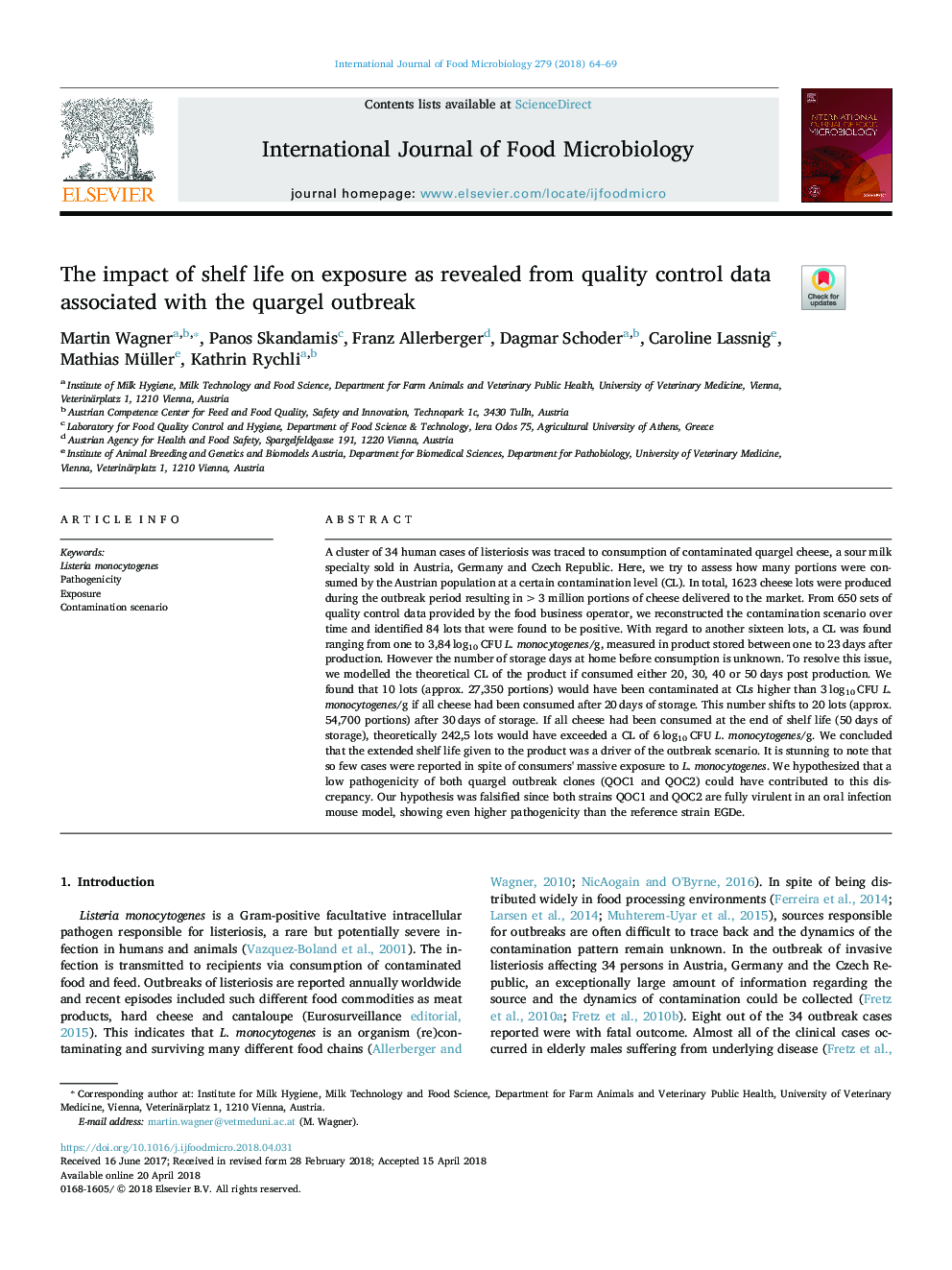| کد مقاله | کد نشریه | سال انتشار | مقاله انگلیسی | نسخه تمام متن |
|---|---|---|---|---|
| 8844155 | 1616504 | 2018 | 6 صفحه PDF | دانلود رایگان |
عنوان انگلیسی مقاله ISI
The impact of shelf life on exposure as revealed from quality control data associated with the quargel outbreak
ترجمه فارسی عنوان
تأثیر عمر مفید در معرض از طریق اطلاعات کنترل کیفیت مربوط به شیوع قرمز
دانلود مقاله + سفارش ترجمه
دانلود مقاله ISI انگلیسی
رایگان برای ایرانیان
کلمات کلیدی
موضوعات مرتبط
علوم زیستی و بیوفناوری
علوم کشاورزی و بیولوژیک
دانش تغذیه
چکیده انگلیسی
A cluster of 34 human cases of listeriosis was traced to consumption of contaminated quargel cheese, a sour milk specialty sold in Austria, Germany and Czech Republic. Here, we try to assess how many portions were consumed by the Austrian population at a certain contamination level (CL). In total, 1623 cheese lots were produced during the outbreak period resulting in >3 million portions of cheese delivered to the market. From 650 sets of quality control data provided by the food business operator, we reconstructed the contamination scenario over time and identified 84 lots that were found to be positive. With regard to another sixteen lots, a CL was found ranging from one to 3,84â¯log10â¯CFU L. monocytogenes/g, measured in product stored between one to 23â¯days after production. However the number of storage days at home before consumption is unknown. To resolve this issue, we modelled the theoretical CL of the product if consumed either 20, 30, 40 or 50â¯days post production. We found that 10 lots (approx. 27,350 portions) would have been contaminated at CLs higher than 3â¯log10â¯CFU L. monocytogenes/g if all cheese had been consumed after 20â¯days of storage. This number shifts to 20 lots (approx. 54,700 portions) after 30â¯days of storage. If all cheese had been consumed at the end of shelf life (50â¯days of storage), theoretically 242,5 lots would have exceeded a CL of 6â¯log10â¯CFU L. monocytogenes/g. We concluded that the extended shelf life given to the product was a driver of the outbreak scenario. It is stunning to note that so few cases were reported in spite of consumers' massive exposure to L. monocytogenes. We hypothesized that a low pathogenicity of both quargel outbreak clones (QOC1 and QOC2) could have contributed to this discrepancy. Our hypothesis was falsified since both strains QOC1 and QOC2 are fully virulent in an oral infection mouse model, showing even higher pathogenicity than the reference strain EGDe.
ناشر
Database: Elsevier - ScienceDirect (ساینس دایرکت)
Journal: International Journal of Food Microbiology - Volume 279, 20 August 2018, Pages 64-69
Journal: International Journal of Food Microbiology - Volume 279, 20 August 2018, Pages 64-69
نویسندگان
Martin Wagner, Panos Skandamis, Franz Allerberger, Dagmar Schoder, Caroline Lassnig, Mathias Müller, Kathrin Rychli,
